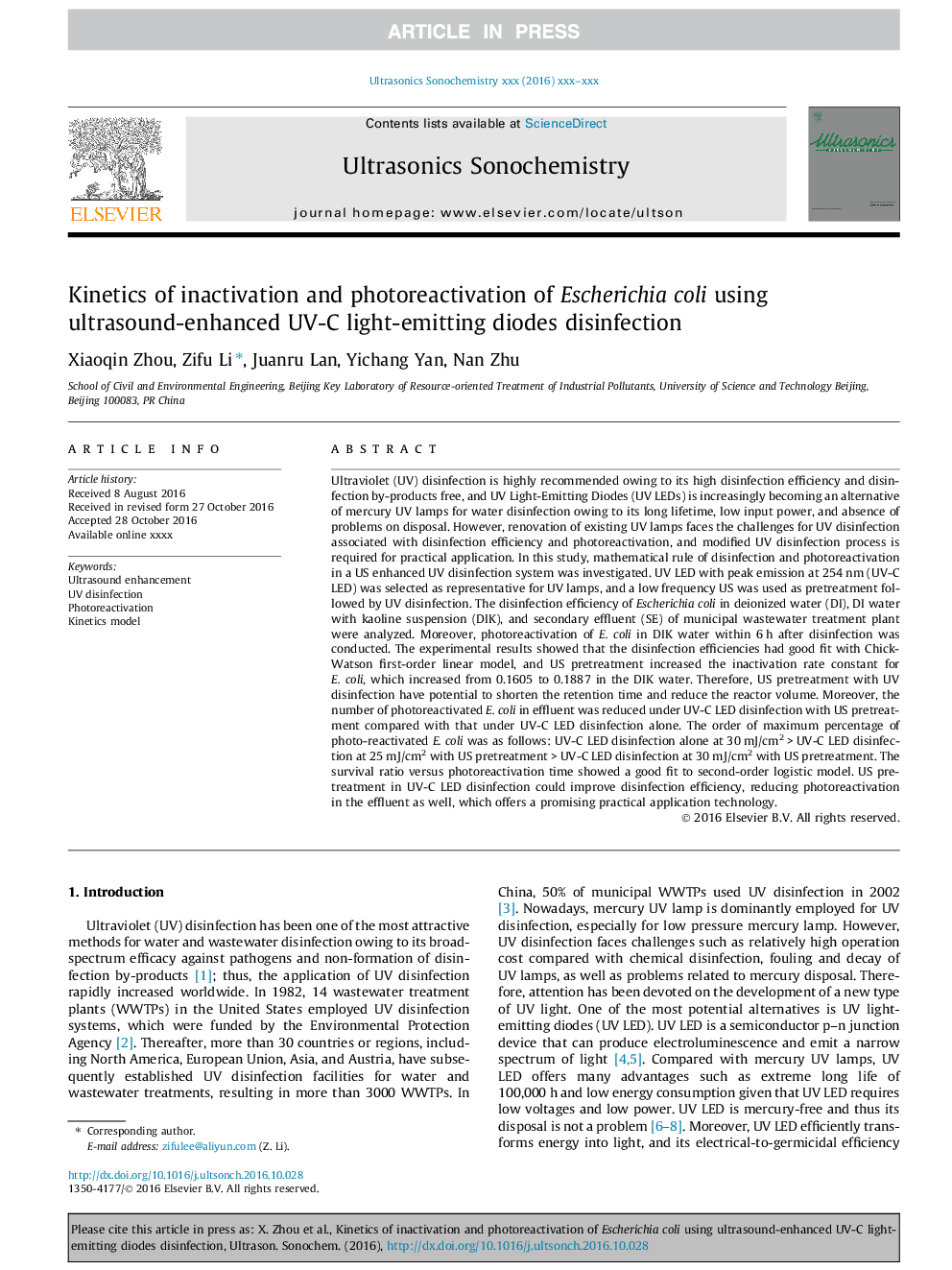| Article ID | Journal | Published Year | Pages | File Type |
|---|---|---|---|---|
| 5144910 | Ultrasonics Sonochemistry | 2017 | 7 Pages |
Abstract
Ultraviolet (UV) disinfection is highly recommended owing to its high disinfection efficiency and disinfection by-products free, and UV Light-Emitting Diodes (UV LEDs) is increasingly becoming an alternative of mercury UV lamps for water disinfection owing to its long lifetime, low input power, and absence of problems on disposal. However, renovation of existing UV lamps faces the challenges for UV disinfection associated with disinfection efficiency and photoreactivation, and modified UV disinfection process is required for practical application. In this study, mathematical rule of disinfection and photoreactivation in a US enhanced UV disinfection system was investigated. UV LED with peak emission at 254 nm (UV-C LED) was selected as representative for UV lamps, and a low frequency US was used as pretreatment followed by UV disinfection. The disinfection efficiency of Escherichia coli in deionized water (DI), DI water with kaoline suspension (DIK), and secondary effluent (SE) of municipal wastewater treatment plant were analyzed. Moreover, photoreactivation of E. coli in DIK water within 6 h after disinfection was conducted. The experimental results showed that the disinfection efficiencies had good fit with Chick-Watson first-order linear model, and US pretreatment increased the inactivation rate constant for E. coli, which increased from 0.1605 to 0.1887 in the DIK water. Therefore, US pretreatment with UV disinfection have potential to shorten the retention time and reduce the reactor volume. Moreover, the number of photoreactivated E. coli in effluent was reduced under UV-C LED disinfection with US pretreatment compared with that under UV-C LED disinfection alone. The order of maximum percentage of photo-reactivated E. coli was as follows: UV-C LED disinfection alone at 30 mJ/cm2 > UV-C LED disinfection at 25 mJ/cm2 with US pretreatment > UV-C LED disinfection at 30 mJ/cm2 with US pretreatment. The survival ratio versus photoreactivation time showed a good fit to second-order logistic model. US pretreatment in UV-C LED disinfection could improve disinfection efficiency, reducing photoreactivation in the effluent as well, which offers a promising practical application technology.
Related Topics
Physical Sciences and Engineering
Chemistry
Chemistry (General)
Authors
Xiaoqin Zhou, Zifu Li, Juanru Lan, Yichang Yan, Nan Zhu,
